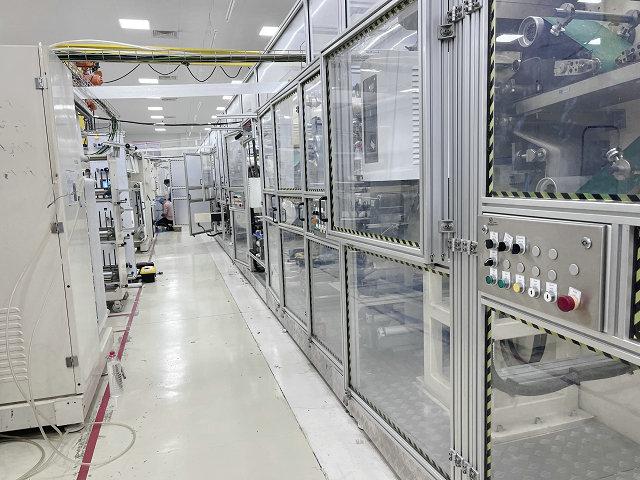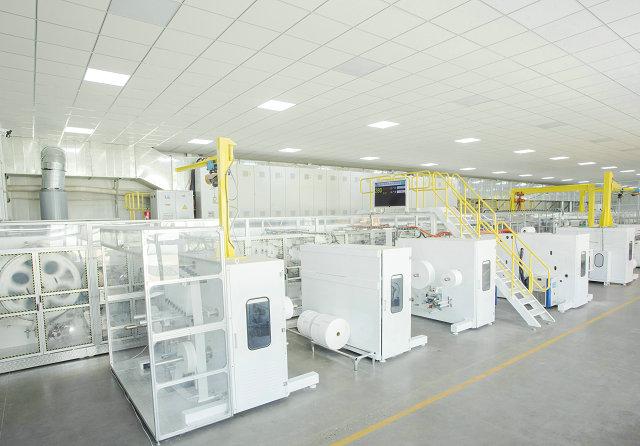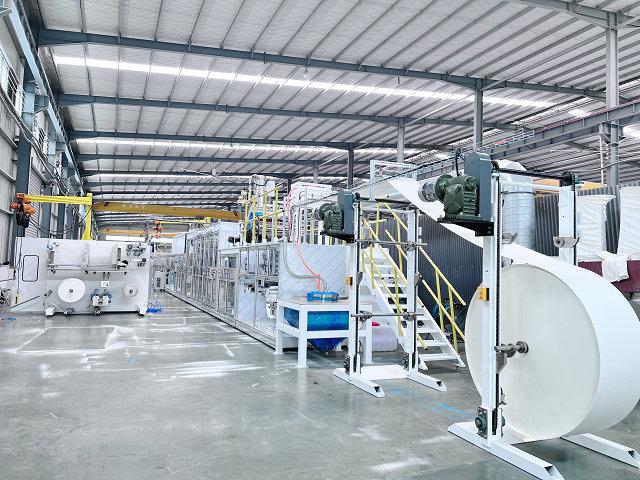Author:Haina Machinery Factory FROM:Diaper Machinery Manufacturer TIME:2024-12-05
Sanitary pad machines play a crucial role in the production of feminine hygiene products, ensuring that millions of women have access to safe and effective menstrual supplies. These machines automate the manufacturing process, increasing efficiency and consistency while reducing labor costs. This article will delve into what a sanitary pad machine is, its components, types, and the manufacturing process involved.
A sanitary pad machine is specialized equipment designed to produce sanitary pads or napkins used during menstruation. These machines can vary widely in design and capability, ranging from small-scale manual machines to large, fully automated systems. The primary purpose of these machines is to convert raw materials into finished products that meet specific quality standards and safety regulations.
The construction of a sanitary pad machine consists of several essential components that work together seamlessly to produce high-quality pads. Key components include:
There are various types of sanitary pad machines, each designed for different production scales and product types. Some of the most common types include:

The manufacturing process of sanitary pads involves several stages, each critical to producing a reliable product. Here’s an overview of the steps involved:
Quality control is paramount in the production of sanitary pads. Manufacturers must adhere to strict guidelines to ensure that the products are safe and effective for users. This involves regular testing of raw materials, monitoring the production process for defects, and conducting final inspections of the finished products. Additionally, manufacturers often follow international standards such as ISO certifications to further assure quality.
As consumer demands evolve, innovation in sanitary pad machines is essential. New technologies are being developed to enhance efficiency, reduce waste, and improve the overall quality of sanitary products. Manufacturers are exploring advancements such as eco-friendly materials, smarter automation, and enhanced comfort features, ensuring that the machines meet the needs of modern consumers.

Despite advancements, manufacturers face several challenges in the sanitary pad industry. These include the rising cost of raw materials, competition from cheaper alternatives, and increasing regulatory requirements. Additionally, addressing environmental concerns related to waste and sustainability has become a significant challenge, prompting manufacturers to seek innovative solutions.

The future of sanitary pad production is likely to be shaped by trends such as sustainability and digitalization. Many manufacturers are now looking at biodegradable materials and more efficient production methods to minimize their environmental impact. Furthermore, the integration of smart technology in machinery could lead to enhanced monitoring and maintenance, ultimately improving production efficiency.
Sanitary pad machines are integral to the production of essential hygiene products, ensuring that women around the world have access to reliable and safe menstrual supplies. With continuous innovations and a focus on quality, these machines are evolving to meet changing consumer needs while addressing challenges within the industry. As manufacturers adapt to new trends and technologies, the future of sanitary pad production looks promising, paving the way for safer and more sustainable products.
